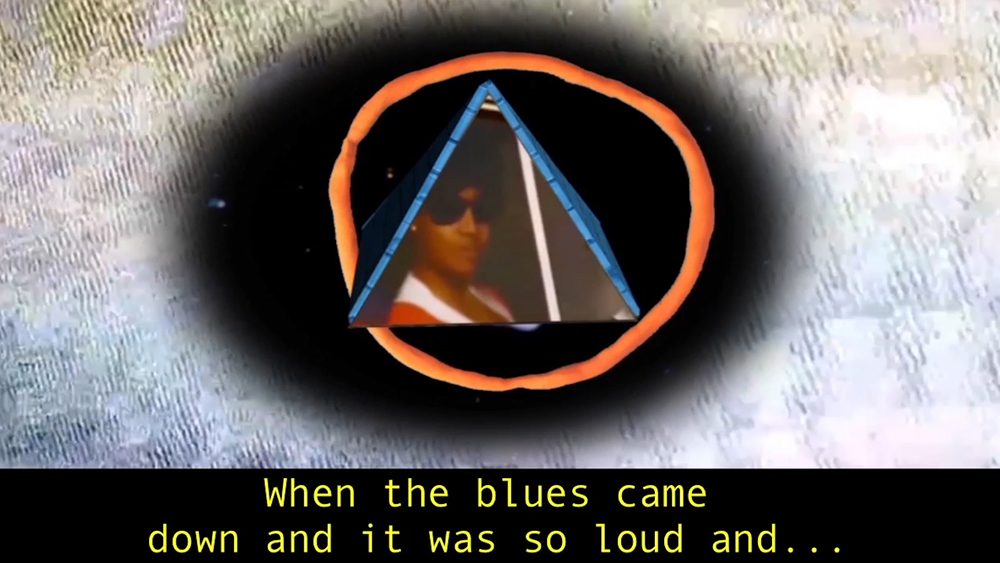Abstracting the City: “Crescent Elsewhere” at the Black Cinema House
In preparation for her move to the city this fall, Allison Glenn reflects on the work of Ariel Jackson from a recent film program in Chicago that looked at post-Katrina New Orleans.

A still from Ariel Jackson’s The Origin of the Blues, 2015. Courtesy the artist.
In a sense, every place is unfathomable, infinite, impossible to describe....
Rebecca Solnit, Unfathomable City: A New Orleans Atlas
The Origin of the Blues is one in a series of short films created by Brooklyn-based, New Orleans-born filmmaker and performance artist Ariel Jackson. It was presented in August as part of “Crescent Elsewhere,” a film program curated by Erin Christovale for the Rebuild Foundation’s Black Cinema House. Through the work of Jackson, Darius Clark Monroe, Terence Nance, and Cauleen Smith, “Crescent Elsewhere” articulated relationships between Dallas, Houston, and New Orleans; traced contemporary migratory patterns; and highlighted important sites of collective memory in New Orleans’ history.
The program coalesced around depictions of post-Katrina New Orleans. These views of the city included narratives about the devastation of the storm, the forced migration of many of the city’s inhabitants, and the subsequent cultural erasure. The Origin of the Blues begins with a voiceover by Jackson’s alter ego, Confuserella—a recurring character in her practice at large—recounting how she “traveled from Panfrika to Plastica, to get [her] degree in finding the origin of the blues,” so that she can go back to Panfrika, pump out the excess blues, and return things back to the way they were. Breaks in the narrative give way to other voices, introduced through archival video footage appropriated from police cameras, television interviews, and old films. This imagery unfolds over a rotating, animated pyramid, designed by collaborator Godfrey Hibbert, whose walls fall and rise as the structure spins on the screen.
Through the abstraction of her body and her identity, Jackson builds a complex narrative around Confuserella’s travels, and the character’s plight to get to the origin of the blues is a concise metaphor for Jackson’s experience of Hurricane Katrina. The artist’s clever assemblage of found film footage articulates the inaccurate media portrayals of the communities most affected by the storm. Communicating through her performative alter ego allows Jackson to process and develop her sense of self both pre- and post-Katrina, within and outside of New Orleans. Jackson came of age during the storm, and the devastation and systematic racism that she experienced has been translated into the character of Confuserella. In an email to me, Jackson notes that the development of Confuserella’s character provides her with the “freedom to figure out [a] shifting identity.” This shift is propelled by challenges the artist faced, when trying to communicate to her peers who were distant from the situation just how severely inequitable media coverage and rescue efforts were.
As I begin to deepen my relationship with the city in preparation for a relocation there this fall for work, my awareness of the impact of the displacement and erasure of entire communities becomes clearer and more distinct. Law professor Bill Quigley’s recent article in The Huffington Post provided concrete numbers regarding the inequities in income, affordable housing, social services, and demographics in post-Katrina New Orleans. According to Quigley, the stark differences in the city continue to become much more palpable as neighborhoods are redeveloped and resources are reallocated.
Through the adoption of an alter ego, Jackson obscures her body and likeness, which allows for the freedom to adopt a constantly shifting, adaptive perspective. The artist’s use of abstraction in the film provides what Adrian Piper eloquently describes in her 1987 essay “Flying”: “freedom from the immediate spatiotemporal constraints of the moment; freedom to plan the future, recall the past, comprehend the present from a reflective perspective that incorporates all three...freedom to survey the real as a resource for embodying the possible.” This gesture gives Jackson an opportunity to survey and process her experience while imagining a future that points to myriad possibilities.
Editor's Note
“Crescent Elsewhere” was screened on August 21, 2016, at the Rebuild Foundation’s Black Cinema House in Chicago.



